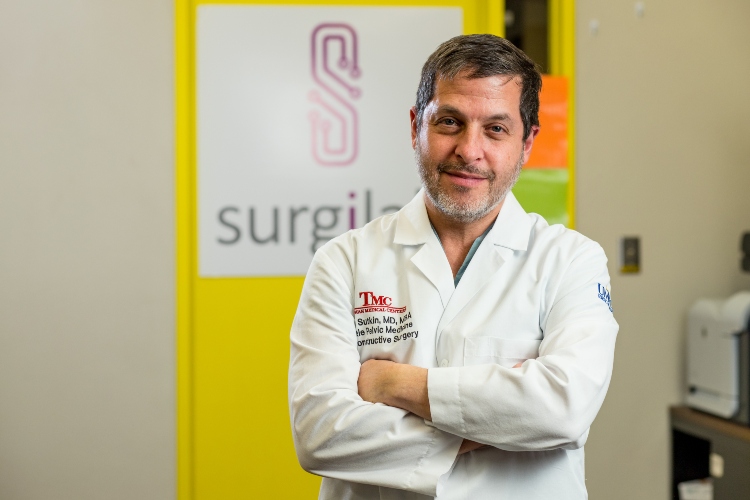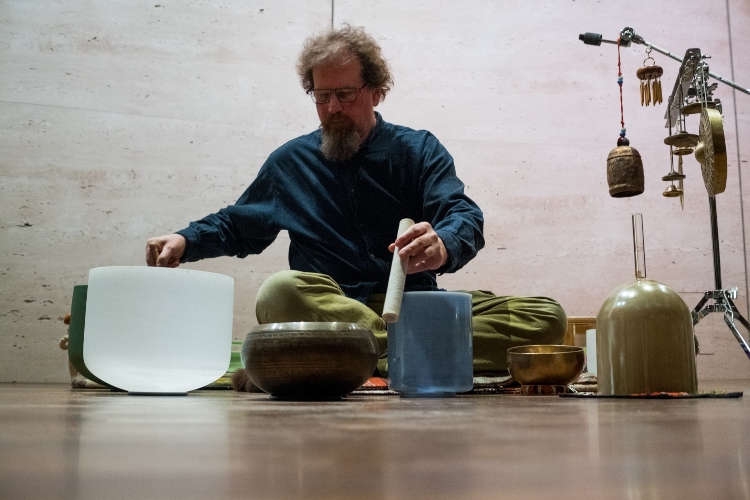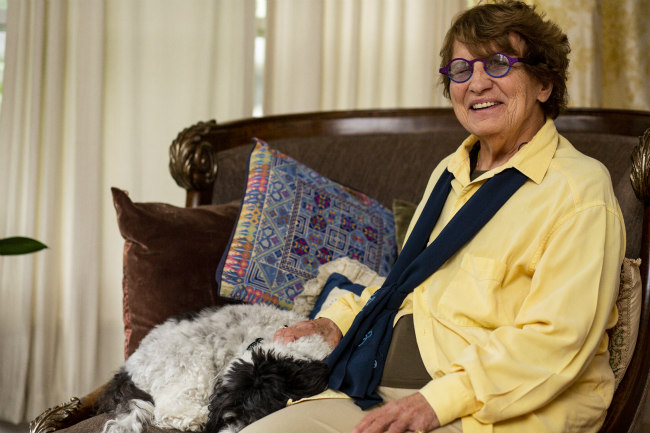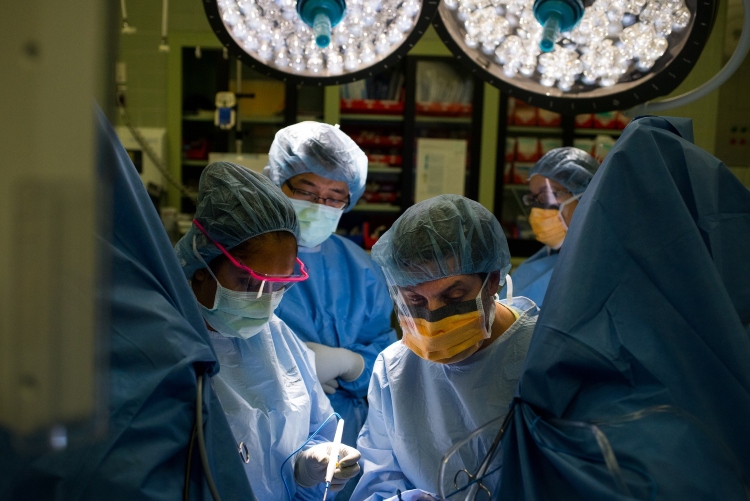Faculty donation leads to collaboration between professors in the School of Medicine and UMKC Conservatory to yield safer surgeries
Medicine and music aren’t an obvious pair, but in a discussion between colleagues at the UMKC Surgical Innovations Lab, experts in each field realized an interesting link between the two topics.
Gary Sutkin, M.D., professor of surgery and associate dean of women’s health at the University of Missouri-Kansas City, has focused much of his research on surgical safety and mitigating errors in the operating room. Today he’s working to expand that research by teaming up with his colleague – and composer – Paul Rudy, MM, DMA, Curators’ Distinguished Professor and coordinator of composition at the UMKC Conservatory, to study the effects of sound on patient safety in the operating room.
Studies have shown that reducing hospital noise levels has a direct impact on improving patient safety, but in operating rooms, in addition to conversations among the surgical team, the equipment required for surgeries makes noise. Though some sounds are necessary – such as the noise of the oxygen saturation monitor, which creates the rapid high-pitched beep people may recognize from medical shows on television — the noise created by people in the room often is not.
Rudy and Sutkin are working together to develop training and surgical methods that reduce some of the noise and related risk.
“People have been trying to solve the problem of miscommunication in the operating room for 20 years and there hasn’t been any meaningful progress,” Sutkin says. “What I know is that we need brains other than those of researchers, surgeons and nurses to study the problem.”

Sutkin’s interest in collaborating with people who have expertise in areas outside of medicine, coupled with Rudy’s curiosity and ability to hear the operating room with fresh ears is already leading to interesting results.
By observing surgeries, Rudy recognized that surgeons’ work entails very fine motor movements and unwavering focus that requires them to keep their heads down. He also observed other members of the surgical team are focused on their own tasks and responsibilities.
“No one’s looking at the surgeon’s body language to figure out what’s needed,” Rudy says. “For example, the anesthesiologist is reading a screen. Much of the communication [the team receives] is coming through sound.”
But despite the importance of verbal communication, he observed a lot of the noise people make in the operating room is not critical to the surgery.
“Everyone is doing something necessary,” Rudy says. “But sometimes someone has to unpackage something in a hurry, and they can’t throw it in the trash can, so it ends up on the floor. Or someone picks up that big wad of plastic to get it out of the way and you can’t hear anything else over the noise. This has to be done – someone could trip over it – but if the surgeon needs to communicate something important to the anesthesiologist at that moment, the noise will mask the communication.”

Because of Rudy’s background as a musician, the amount of residual noise in the operating room came as a surprise.
“In rehearsals and in performances, no one makes any extra sound anywhere for any reason,” Rudy says. “Musicians carefully turn pages of sheet music so that the binder doesn’t make any noise.”
He’s aware of the differences between the disciplines, but still notes there is room for improvement when it comes to eliminating some unnecessary noise in operating rooms. Rudy’s research has identified solutions to common disruptions that OR teams may not even notice.
“For example, in the operating room there are really heavy metal step stools,” Rudy says. “People tend to scoot them across the floor with their feet and it makes this really intense grating sound that may mask any kind of communication that is going on in the room.”
Rudy understands that the medical professionals in the operating room move the stools with their feet because they need to keep their hands sterile, but he wonders if manufacturers are aware of the ramifications of production decisions.
“This research could lead to that awareness, and maybe even influence manufacturing standards.”
Observations like this that lead to opportunity for innovation and increased safety is at the heart of the mission of Surgilab and are why Sutkin wants colleagues like Rudy in the operating room.
“There’s value in having insight from brains other than researchers, surgeons and nurses. Paul brings a wealth of knowledge and creativity. And, surprisingly, to be honest, a scientific mind that contributes very well with this research.”

A gift from UMKC professor emerita, Elizabeth Noble, Ph.D., helped fund this research collaboration. Noble supports research that reaches across different fields of study because she thinks it makes the outcomes more reliable and more transferable.
“Today most researchers would agree that cross-disciplinary research is valuable,” Noble says. “It stimulates new ways of thinking about different issues, especially when we’re talking about music and medicine which are not always assumed to go together.”
“This research is exactly what I hoped would occur. I’m very happy that Dr. Rudy has had this kind of success,” she added.

